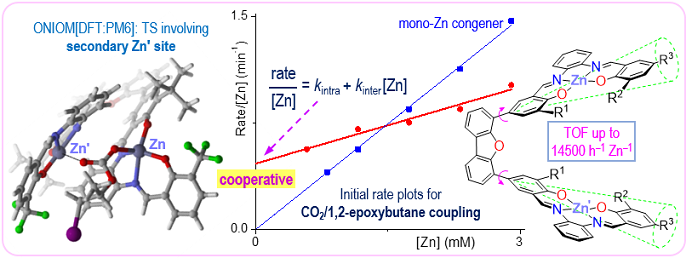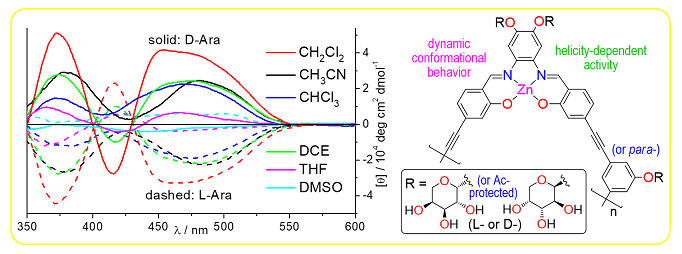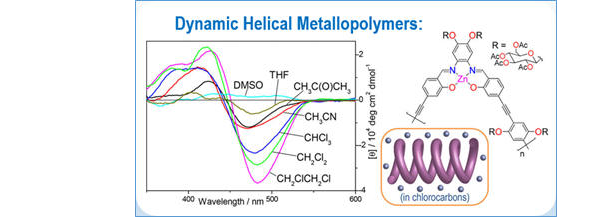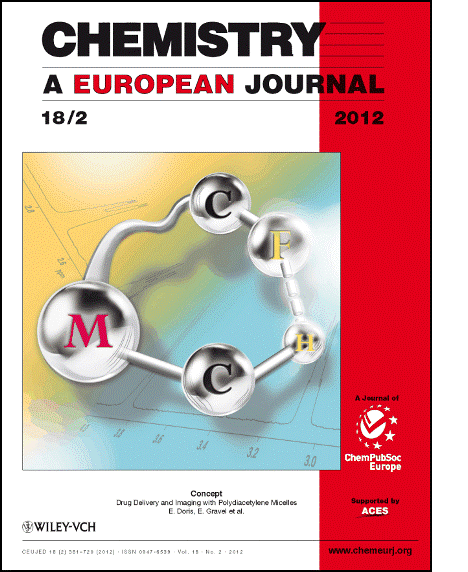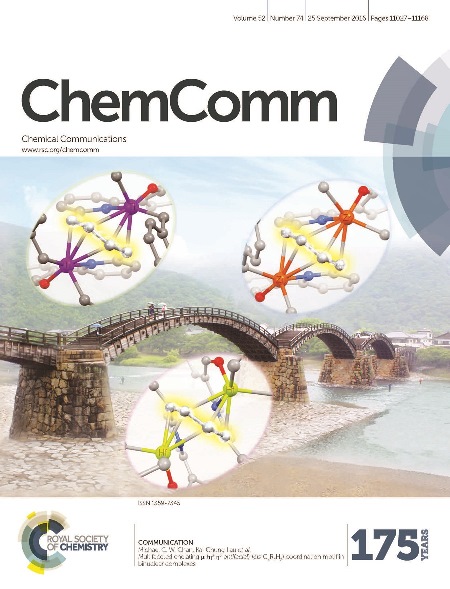
Professor of Department of Chemistry
| Office: | YEUNG-G6615 |
|---|---|
| Phone: | +852 3442-9678 |
| Email: | mcwchan[at]cityu.edu.hk |
| ORCID ID: | 0000-0002-2997-8577 |
| Scopus Author ID: | 29067669100 |
Michael Chan was born in Hong Kong, and emigrated to England in 1978. He received his Ph.D. (on catalyst design and polymerization technology) in 1995 from Durham University. His post-doctoral studies (on light-emitting materials) was conducted at the University of Hong Kong, where he was appointed Research Assistant Professor in 1998. He joined City University of Hong Kong as an Assistant Professor in 2004, and was promoted to Associate Professor (B) in 2009, Associate Professor (A) in 2013, and Professor in 2018.
His invited talks include a Plenary Lecture at 22nd International Symposium on Homogeneous Catalysis (XXII-ISHC) in Lisbon, Portugal in July 2022, and a Keynote Lecture at 16th International Symposium on Relations between Homogeneous and Heterogeneous Catalysis (ISHHC-16) in Sapporo, Japan in August 2013. He was a Symposium Co-organizer for "Polyolefins Chemistry and Beyond - From Bench To Commercial Scale" (Symposium #211) at Pacifichem 2010 in Honolulu, Hawaii in December 2010, and has held visiting appointments at Osaka University, University of Münster and University of British Columbia.
His papers on C-H···F-C interactions in post-metallocene catalysts have been selected as Cover Pictures in Chemistry – A European Journal, and an overview was published in Accounts of Chemical Research. He has been actively engaged in collaborative research on olefin polymerization catalysts with industrial partners, and has obtained 8 international patents.
Major Honours
Founding Member, Hong Kong Young Academy of Sciences (year of induction: 2018).
Mitsui Chemicals Catalysis Science Award of Encouragement (2007).
Positions Available in Catalysis / Supramolecular / Organometallic Chemistry
PhD studentships are available in topics including (but not limited to): coordination/organometallic (Schlenk-type)/supramolecular chemistry and/or homogeneous catalysis.
PhD candidates must have a good MPhil or BSc degree in chemistry, and proven English proficiency (TOEFL: minimum total score of 550 (paper-based) / 79 (internet-based) / 59 (revised paper-delivered test); or IELTS: overall score of 6.5). The ideal candidate should display good problem-solving skills and creativity, and possess a strong background/experience in synthetic (organic/coordination) chemistry.
PhD applications should be made asap (applications will be accepted until all positions are filled). For initial enquiries, please contact Prof. Chan by email and include a full CV with contact details of referees.
Research Interests and Projects
The following topics, underpinned by utilization of supramolecular strategies, are under investigation:
- design of novel catalyst systems for polymerization reactions, and development of 'weak attractive ligand–polymer interactions' in catalysis;
- crowded and shape-persistent luminescent molecular and polymeric architectures exhibiting unusual photophysical and conformational properties;
- development of 'shape-persistent bimetallic design' approach for catalytic production of valuable feedstock and polymers from sustainable resources.
Selected Publications
- Coplanar Binuclear Group 4 Post-Metallocene Complexes Supported by Chelating μ-(σ2-Aryl) Ligands: Characterisation and Olefin Polymerisation Catalysis, Y. Li, Q. Liu, J. Bao, S.-M. Yiu, M. C. W. Chan, Dalton Trans., in press. https://doi.org/10.1039/d3dt03641c
- Cooperativity in Shape-Persistent Bis-(Zn-salphen) Catalysts for Efficient Cyclic Carbonate Synthesis under Mild Conditions, Y. Xia, S. He, J. Bao, H. Hirao, S.-M. Yiu, M. C. W. Chan, Inorg. Chem., 2022, 61, 19543–19551. DOI: 10.1021/acs.inorgchem.2c03480
- Saccharide-Functionalized Poly(Zn-salphen)-alt-(m-and p-phenyleneethynylene)s as Dynamic Helical Metallopolymers, C. Zhao, S. Meng, H.-N. Chan, X. Wang, H.-W. Li, M. C. W. Chan, Angew. Chem. Int. Ed., 2022, 61, e202115712. DOI: 10.1002/anie.202115712
- Group 4 Post-Metallocenes Supported by [OCH2N,C(σ-aryl)] Auxiliaries Bearing a Seven-Membered Metallacycle: Synthesis, Characterization and Catalysts for Olefin Polymerization, C.-C. Liu, Q. Liu, S.-M. Yiu, M. C. W. Chan, Organometallics, 2019, 38, 2963–2971. DOI: 10.1021/acs.organomet.9b00307
- Olefin Polymerization Reactivity of Group 4 Post-Metallocene Catalysts Bearing a Four-Membered C(sp3)-Donor Chelate Ring, C.-C. Liu, Q. Liu, P.-K. Lo, K.-C. Lau, S.-M. Yiu, M. C. W. Chan, ChemCatChem, 2019, 11, 628–635. DOI: 10.1002/cctc.201801008
- Poly(Zn-salphen)-alt-(p-phenyleneethynylene)s as Dynamic Helical Metallopolymers: Luminescent Properties and Conformational Behavior, C. Zhao, S. Sun, W.-L. Tong, M. C. W. Chan, Macromolecules, 2017, 50, 6896–6902. DOI: 10.1021/acs.macromol.7b01269
- Multifaceted Chelating μ-(η3:η3-antifacial)-(cis-C4R2H2) Coordination Motif in Binuclear Complexes, C.-C. Liu, M. C. W. Chan, P.-K. Lo, K.-C. Lau, S.-M. Yiu, Chem. Commun., 2016, 52, 11056–11059 (Cover Article; Inside). DOI: 10.1039/c6cc05535d
- Topologically Diverse Shape-Persistent Bis-(Zn-salphen) Catalysts: Efficient Cyclic Carbonate Formation under Mild Conditions, S. He, F. Wang, W.-L. Tong, S.-M. Yiu, M. C. W. Chan, Chem. Commun., 2016, 52, 1017–1020. DOI: 10.1039/c5cc08794e
- Chelating σ-Aryl Post-Metallocenes: Probing Intramolecular [C–H···F–C] Interactions and Unusual Reaction Pathways, C.-C. Liu, M. C. W. Chan, Acc. Chem. Res., 2015, 48, 1580–1590. DOI: 10.1021/acs.accounts.5b00008
- Luminescent Oligo(ethylene glycol)-Functionalized Cyclometalated Platinum(II) Complexes: Cellular Characterization and Mitochondria-Specific Localization, Z. Guo, W.-L. Tong, M. C. W. Chan, Chem. Commun., 2014, 50, 1711–1714. DOI: 10.1039/c3cc47150k
- Shape-Persistent (Pt-salphen)2 Phosphorescent Coordination Frameworks: Structural Insights and Selective Perturbations, Z. Guo, S.-M. Yiu, M. C. W. Chan, Chem. Eur. J., 2013, 19, 8937–8947. DOI: 10.1002/chem.201300421
- Crowded Bis-(M-salphen) [M = Pt(II), Zn(II)] Coordination Architectures: Luminescent Properties and Ion-Selective Responses, W.-L. Tong, S.-M. Yiu, M. C. W. Chan, Inorg. Chem., 2013, 52, 7114–7124. DOI: 10.1021/ic400692x
- Olefin Polymerization Behavior of Titanium(IV) Pyridine-2-phenolate-6-(σ-aryl) Catalysts: Impact of ‘py-Adjacent’ and Phenolate Substituents, J. C. Y. Lo, M. C. W. Chan, P.-K. Lo, K.-C. Lau, T. Ochiai, H. Makio, Organometallics, 2013, 32, 449–459. DOI: 10.1021/om300832q
- Scalar Coupling Across [C-H···F-C] Interactions in (σ-Aryl)-Chelating Post-Metallocenes, L.-C. So, C.-C. Liu, M. C. W. Chan, J. C. Y. Lo, K.-H. Sze, N. Zhu, Chem. Eur. J., 2012, 18, 565–573 (Cover Picture). DOI: 10.1002/chem.201102439
- Congested Cyclometalated Platinum(II) Ditopic Frameworks and Their Phosphorescent Responses to S-Containing Amino Acids, W.-L. Tong, M. C. W. Chan, S.-M. Yiu, Organometallics, 2010, 29, 6377–6383. DOI: 10.1021/om1007488
- Alternating Poly(Pt-salphen)-(p-phenyleneethynylene) as Phosphorescent Conjugated Linear-Rod and Coilable Sensory Materials, S. Sun, W.-L. Tong, M. C. W. Chan, Macromol. Rapid Commun., 2010, 31, 1965–1969. DOI: 10.1002/marc.201000266
- Shape-Persistent Binuclear Cyclometalated Pt(II) Luminophores: Pushing π-Mediated Excimeric Fluid Emissions into the NIR Region and Ion-Induced Perturbations, Z. Guo, M. C. W. Chan, Chem. Eur. J., 2009, 15, 12585–12588. DOI: 10.1002/chem.200902328
- Neutron and X-Ray Diffraction and Spectroscopic Investigations of Intramolecular [C-H···F-C] Contacts in Post-Metallocene Polyolefin Catalysts: Modeling Weak Attractive Polymer–Ligand Interactions, M. C. W. Chan, S. C. F. Kui, J. M. Cole, G. J. McIntyre, S. Matsui, N. Zhu, K.-H. Tam, Chem. Eur. J., 2006, 12, 2607–2619 (Cover Picture). DOI: 10.1002/chem.200501054
- Observation of Intramolecular [C-H···F-C] Contacts in Non-Metallocene Polyolefin Catalysts: Model for Weak Attractive Interactions between Polymer Chain and Non-Innocent Ligand, S. C. F. Kui, N. Zhu, M. C. W. Chan, Angew. Chem. Int. Ed., 2003, 42, 1628–1632. DOI: 10.1002/anie.200219832
